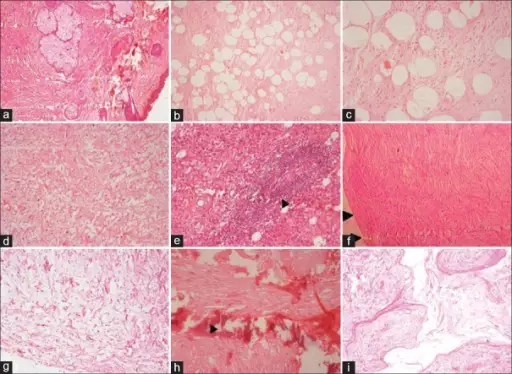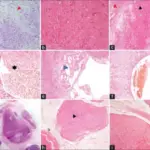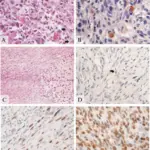Neurofibromas are benign peripheral nerve sheath tumors and can be superficial cutaneous, diffuse, or plexiform.
What is the Pathology of Neurofibroma?
The pathology of neurofibromas is:
-Etiology: The cause of neurofibromas is a genetic mutation.
-Genes involved: NF1 gene.
-Pathogenesis: The sequence of events that lead to neurofibromas is non-myelinating Schwann cells that grow on the peripheral nerves and can increase in size hence becoming a neurofibroma.
-Morphology: The morphology associated with neurofibroma shows soft pedunculated or sessile papules.
-Histology: The histology associated with neurofibroma shows a non-encapsulated lesion on the dermis, mast cells, fibroplasia, and mucin deposition.
How does Neurofibroma Present?
Patients with neurofibroma typically both males and females present at the age range of 20-40 years. The symptoms, features, and clinical findings associated with neurofibroma include flat, light brown spots on the skin, bone deformities, bumps on or under the skin, Lisch nodules.
How is Neurofibroma Diagnosed?
Neurofibroma is diagnosed by CT scan, physical examination, MRI, PET scan, and biopsy.
How is Neurofibroma Treated?
Neurofibroma is treated by close monitoring, and surgery when indicated.
What is the Prognosis of Neurofibromas?
The prognosis of neurofibroma is good.



